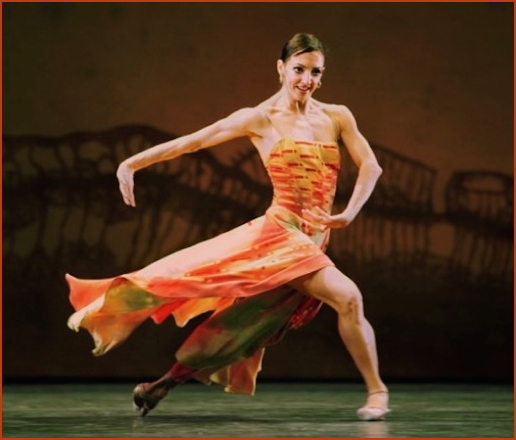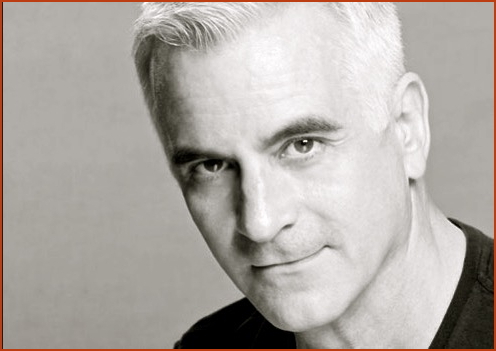This season marks the 20th Anniversary of choreographer Val Caniparoli's immensely popular ballet, Lambarena. The work was created in 1995 for San Francisco Ballet and - at the heart of its inspirational force - Principal Dancer Evelyn Cisneros. Lambarena is a part of Program 1 at SFBallet which opens Tuesday, January 27 and runs for seven performances through February 27. The program also includes an encore of RAkU by the company's Choreographer in Residence, Yuri Possokhov, and Balanchine's 1935 masterwork, Serenade.
Twenty years and many productions later, Caniparoli continues to fine-tune Lambarena - an extraordinary work set to a number of tracks from the 1995 CD, Lambarena - Bach to Africa. Described as a multicultural homage to Albert Schweitzer, the album was created by Gabonese composer Pierre-Claver Akendengué and arranger Hughes de Courson. The music combines traditional harmonies and rhythms of Gabon (located on the western border of Central Africa) with themes by Johann Sebastian Bach. The recording, used for all performances, came to Val through a friend who knew he was struggling to find the perfect music to celebrate the artistry of Evelyn Cisneros. It was love at first hearing. Suddenly caught in an ecstasy of artistic revelation and facing an immediate rehearsal schedule, Val brought in African dance consultants Naomi Gedo Johnson-Washington and Zakariya Sao Diouf. As with the recording project, the goal for his new ballet was to amalgamate the rhythms and moves of separate cultures into one cohesive expression. During that same period, Val had agreed to undertake Lady of the Camellias - a project that had been initiated by one of his mentors, the late choreographer, Norbert Vezak. Vezak's partner and production designer, Robert de la Rose, persuaded Val to make their dream come true. Set to selections by Chopin, the work has proved to be an enduring favorite. Boston Ballet is celebrating the 20th Anniversary of Lady of the Camellias with eleven performances beginning February 26. As with Lambarena - Val continues to woo and indulge his beloved "Camille".
"It's natural," says the choreographer. "Lady of the Camellias is almost a half-hour shorter. You look at the work - it was successful. But this year, I've even changed some of the choices in the music. 'I've said that already!' And I can't cut that particular music any more because I was also a music major and that drives me crazy. Lambarena is also changing this year. Since it opened, Lambarena has been done by twenty-five different companies - the solos and pas de deux are performed in competitions and at galas. It has been constantly performed and I have been constantly tweaking it. So, it's a totally different ballet than when it opened. I always say that Balanchine tweaked his ballets - his masterpieces - up until his death."
Principal Dancer Lorena Feijóo will do the opening performance of Lambarena. Caniparoli's evergreen ballet reflects the power of international artistic collaboration. I asked the choreographer how he conveys the soul of his work to a new ensemble, particularly to the principals.
"It takes that special dancer," he said. "It also takes somebody you know. I've seen them in other works - we will get there. Dancers learn differently. Some say, 'I need to learn these steps before I do the inspiration behind it.' Others want the inspiration first - but you let them go in their own time. I have a pretty good track record of spotting those dancers who I know well - who will do it well - and give the ballet what it needs. I was a dancer. I did the dancing-thing, studied music and acting - I have tons of training. Working with A.C.T., I'm watching what Carey Perloff does with character development. That's helped me work with the dancers, especially during Ibsen's House. Glenn McCoy, who's been the Executive Director here forever says, 'I love the fact you bring in people. You bring in help and resources for the work you're doing.' The dancers love that."
In 2008, fans of Sesame Street watched sisters Lorena and Lorna Feijóo dance "The Lambarena" for Zoe - a three-year-old orange monster obsessed with ballet who spends her days in a tutu, a gift from an aunt who lives at Swan Lake. At the beginning of the segment, now available on YouTube, Zoe wonders if the dance she knows as "The Lambarena" (emphasis on "lamb") is the same dance her two internationally famous friends will perform. "It goes like this," says Lorena. The music is taken from Track 7 of the CD, beginning with the whimsical measures of Bach's Prélude de la Partita pour violon no.3. Zoe is awestruck. Lorna and Lorena are beautifully costumed, they dance in perfect unison, and Hervé Cavelier's violin solo sounds like Heaven itself. A few measures later, the music shifts to the percussions of the Elugu Ayong ensemble and the lively melody from Gabon, "Pepa Nzac Gnon Ma". As they dance, the Feijóo sisters reveal Caniparoli's marvelous flair for blending classical footing with the steamier side of local tradition. Zoe and her wooly friend are ecstatic - their Lambarena is everybody's Lambarena.
I admitted to Val that I envied his opportunity of transforming the 1848 novel, The Lady of the Camellias by Alexandre Dumas, fils, into a ballet. His treatment of the great love story of Marguerite Gautier and Armand Duval and the application of music by Frédéric Chopin soothes the longing that most lovers of classical dance have for the grand story ballets. Why are there not more? What are the roadblocks? When an opportunity to stage Lady of the Camellias occurs, how does he draw out deep dramatic interpretations from young dancers who deal with so much abstract ballet?
"Dancers are starved for those meaty roles. I was a dancer. I did the dancing-thing, studied music and acting -- I have tons of training. For Lady of the Camellias, I make them watch the film version with Greta Garbo, to watch and listen to La Traviata, to see everything they can to understand her character. And all the other characters as well -- there's a lot of depth to them. I want to give the dancers as much as I can."
"We're in an age of abstraction in ballet. As dancers, we don't get enough stories and storylines. There are issues. It's harder and you have to work harder at it. I'm going to New York with Ballet West and doing Shirley Jackson's The Lottery. Again, you can't just do The Lottery - you have to get the rights, commission the music, etc. And it's not easy. Sometimes you throw your arms up and go, 'OK, I can't take this - I'm doing an abstraction!' It's hard, but you just have to stick with it and sometimes you have to start years in advance. And you don't always get commissions years in advance. I've been contacted by film composers who are making a lot of money and wanting to branch out into non-profit ballet - because they can. They want that challenge, that classical stamp."
"We're always expected to do masterpieces right away. That's impossible. In the ballet world we don't get previews. We don't have all that tech time or the out-of-state tours and try-outs like film and Broadway. For us, it's two days in the theatre - it's got to be a masterpiece. I find that impossible. If your ballet is successful, when other companies do it - you think, 'Now I can work on it. Why did I do that when I should have done this? This is better!' - and it just keeps getting stronger. So, that's great. And I have the best time doing it."

